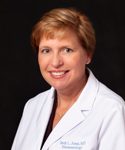“There are several hundred NPs [nurse practitioners] and PAs [physician assistants] in rheumatology practice across the U.S., in addition to approximately 3,000 rheumatologists. However, an impending shortage of rheumatologists suggests that many more providers of rheumatologic care may be needed,” Daniel H. Solomon, MD, MPH, of the Division of Rheumatology at Brigham and Women’s Hospital in Boston, and colleagues write in their most recent paper.
Under the Affordable Care Act, the use of NPs and/or PAs is encouraged to address physician shortages, but little is known about the outcomes of care provided by them in medical specialties, such as rheumatology. Dr. Solomon and colleagues examined the process and outcomes of care for rheumatoid arthritis (RA) patients provided by NPs or PAs working in tandem with rheumatologists and compared them with that provided exclusively by rheumatologists. Their results were published in the December 2015 issue of Arthritis Care & Research.
Seven rheumatology practices participated in the study: four had NPs or PAs, and three did not. Data were collected on 301 patients with RA from 2010–2013, resulting in 1,982 office visits. The main data points were the Disease Activity Score in 28 joints, a Clinical Disease Activity Index score or a Routine Assessment of Patient Index Data 3 score. Approximately, 33% of visits did not have a recorded measure.
The Results
Overall, researchers found the practice types were similar, with similar patient populations and RA treatments. “Although these findings reflect one subspecialty and a single disease entity, they do support the hypothesis that increasing the use of nurse practitioners or physician assistants does not compromise process or outcomes of care,” write the authors.
For practices with NPs or PAs, 61.9% of visits did not include a rheumatologist. Methotrexate was the most common synthetic DMARD initiated, accounting for approximately one-third of initiations in both types of practices. But biologic DMARDs were more common in practices with NPs or PAs (52%) than in rheumatologist-only practices (36%) (P=0.001).
Additionally, the RA disease activity at baseline was lower (P=0.08), with slightly over 60% of patients in remission or in a low disease activity state, compared with approximately 50% of patients in rheumatologist-only practices. This result suggests that RA disease activity control may have been slightly better in practices with NPs or PAs; “however, there was no difference when change in disease activity was compared across practice types [OR 0.98, 95% CI 0.94–1.03],” write the authors.

